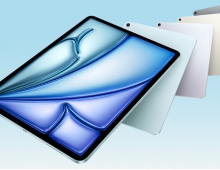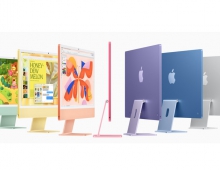
A Closer Look To New iPad's Retina Display
Apple has managed to squeeze four times the pixels into the 9.7-inch display of the new iPad by taking advantage of the SHA (Super High Aperture) pixel designs.
Apple's new iPad offers multiple enhancements but the most prominent is the 2048 x 1536, 264 ppi retina display. The display has four times as many pixels as the iPad 2 display. Apple promotes the new display at length on its iPad Features page, including a graphically interesting video under "Breakthrough technology. For a breakthrough display." explaining, "When you squeeze four times the pixels into the same space, signals can get crossed, colors become distorted and images get fuzzy. To solve this we had to elevate the pixels onto a different plane and separate from the signals."
What does Apple mean? According to Charles Annis, Vice President, Manufacturing Research for DisplaySearch, Apple is referring to SHA (Super High Aperture) pixel designs.
"SHA is a method of increasing aperture ratio by applying approximately a 3 µm thick photo-definable acrylic resin layer to planarize the device and increase the vertical gap between the ITO pixel electrodes and signal lines," Annis said. "This reduces unwanted capacitive coupling and enables the electrode to be extended over the gate and data lines without causing cross talk or affecting image quality - thus increasing aperture area," he added.

SHA technology was pioneered by Sharp and JSR many years ago. Initially adoption was slow due to added process complexity, increased costs and yield challenges. However, as super high resolution displays for mobile applications have increased the importance of high transmission and low power consumption, SHA has now become a critical technology for manufacturing high quality LCDs.
The display has been a challenge to manufacture. Sharp, Samsung, and LG Display are all suppliers of the new display. Regardless of the TFT technology used, the doubling of the pixel density means a significantly smaller aperture ratio, which means that a brighter backlight is needed. DisplayResearch says the iPad 3 panel has at least twice as many LEDs than the iPad 2, which had 36. This most likely means a significant increase in power consumption for the panel but Apple is using a larger battery in order to accommodate the high resolution display with more LEDs than iPad 2.
It will be interesting to see if consumers get excited about the higher image quality on the new iPad. If so, it could be difficult for Apple to secure an adequate supply of panels, given the manufacturing challenges.
What does Apple mean? According to Charles Annis, Vice President, Manufacturing Research for DisplaySearch, Apple is referring to SHA (Super High Aperture) pixel designs.
"SHA is a method of increasing aperture ratio by applying approximately a 3 µm thick photo-definable acrylic resin layer to planarize the device and increase the vertical gap between the ITO pixel electrodes and signal lines," Annis said. "This reduces unwanted capacitive coupling and enables the electrode to be extended over the gate and data lines without causing cross talk or affecting image quality - thus increasing aperture area," he added.
SHA technology was pioneered by Sharp and JSR many years ago. Initially adoption was slow due to added process complexity, increased costs and yield challenges. However, as super high resolution displays for mobile applications have increased the importance of high transmission and low power consumption, SHA has now become a critical technology for manufacturing high quality LCDs.
The display has been a challenge to manufacture. Sharp, Samsung, and LG Display are all suppliers of the new display. Regardless of the TFT technology used, the doubling of the pixel density means a significantly smaller aperture ratio, which means that a brighter backlight is needed. DisplayResearch says the iPad 3 panel has at least twice as many LEDs than the iPad 2, which had 36. This most likely means a significant increase in power consumption for the panel but Apple is using a larger battery in order to accommodate the high resolution display with more LEDs than iPad 2.
It will be interesting to see if consumers get excited about the higher image quality on the new iPad. If so, it could be difficult for Apple to secure an adequate supply of panels, given the manufacturing challenges.





















